
Drummer Lab is a series that follows Nadia Azar’s kinesiology research on some of your favorite drummers.
Over the rest of the summer and fall of 2018, I continued to recruit and collect data on professional drummers for the Drummer Lab energy expenditure study, including Christian Tanna (I Mother Earth) and John Clardy (Tera Melos). Given that I only had a single data set for each of them, I decided to combine them here. It’s important to note that the goal is not to compare results between individual drummers, but to showcase their individual data and some interesting observations from each of them.
I’ve also summarized the results from all the Year 1 participants to start to look for trends in the data. Make sure you read to the end!
Christian wore the armbands and heart rate (HR) monitor during a show at Toronto’s Festival of Beer (July 29, 2018). This was an interesting data collection, because Finger Eleven played right before I Mother Earth, and Steve Molella joined Christian during the encore – the first time collecting data on two drummers at the same time!

Here’s what we found:
Christian’s total energy expenditure over the 89 minute set was 1218 Calories, for an average intensity of just under 14 Cal/min. “Used to Be Alright”, “Raspberry”, and “No One” all registered intensities of about 15 Cal/min, but “No One” claims the title for Most Intense Song because Christian registered the highest average HR (184 BPM) and peak HR (189 BPM) during this song.
One commonly used formula to calculate the maximum possible heart rate a person can achieve is HRmax = 220-age1. However, HRmax varies a lot between different people, so a person’s actual HRmax can be very different from their age-predicted HRmax.
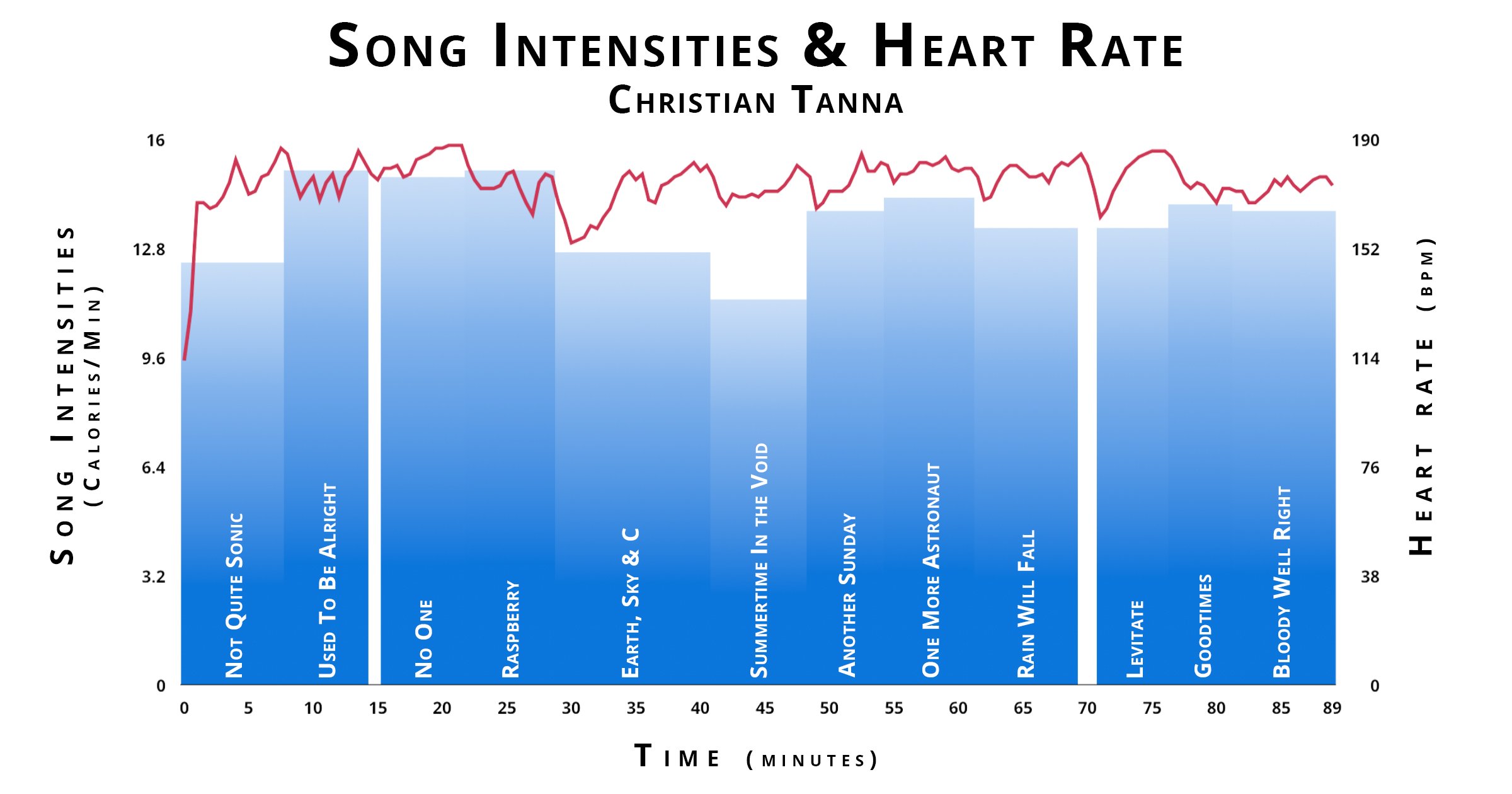
Christian’s HR data shows that he is one of the individuals for whom this calculation does not hold. His average and peak HR during the show were both well above his age-predicted HRmax, at 175 BPM and 189 BPM, respectively. This was the case even when I used another commonly used equation to predict his HRmax (HRmax = 208-[0.7*age])2.
Christian’s true HRmax could be the peak HR achieved during the show (189 BPM), or it could be even higher – without physiologic testing, it’s not possible to know.
Regardless, given that the average adult’s resting HR is between 60-100 BPM3, it’s clear that Christian was working very hard up there! If I assume that his HRmax is the peak HR he reached during the show, then Christian spent 72% of the show at a ‘vigorous’ intensity (77-95% HRmax) and 27% of the show ‘near or at maximal’ intensity (96-100% HRmax)4.
John wore the armbands and HR monitor during a show at the Pike Room in Pontiac, MI in November of 2018.
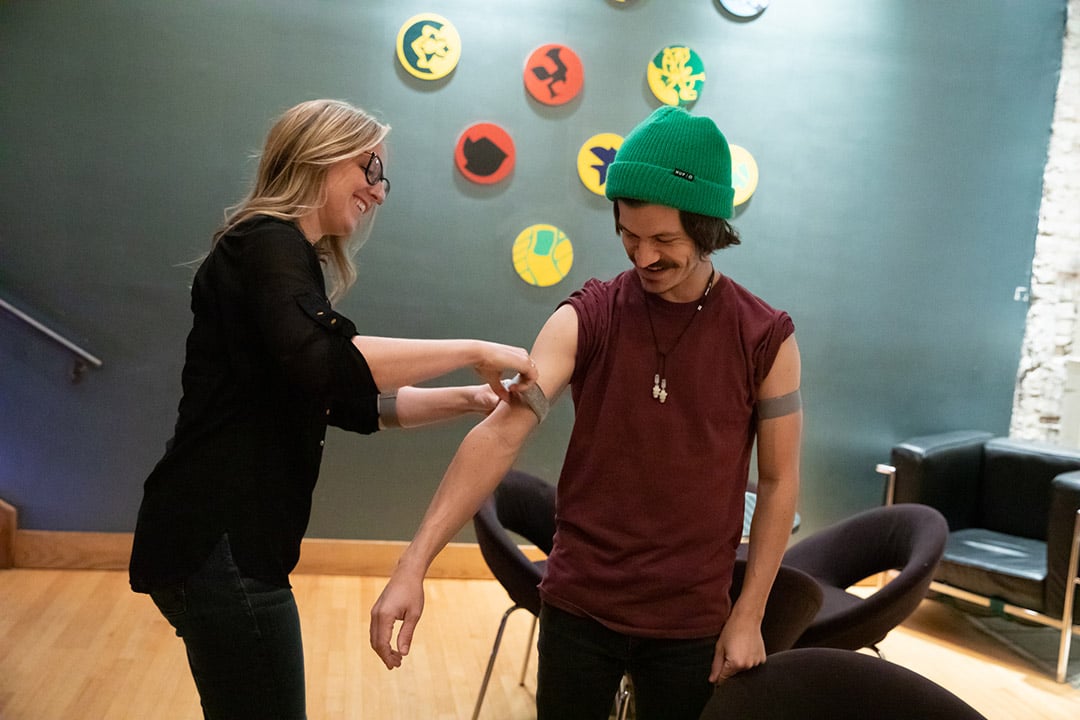
Here’s what we found:
John burned a total of 516 calories over the 56-minute set (~9 Cal/min), and “Your Friends” was the most intense song (average intensity: 11 Cal/min, average HR: 154 BPM, peak HR: 162 BPM). His average heart rate over the entire set was 134 BPM, representing 72% of his age-predicted HRmax. He spent 52% of the show in the moderate intensity zone (64-76% HRmax), and 33% in the vigorous intensity zone.
After I sent him his data, John wanted to know how his numbers compared to the other drummers I’ve worked with. I don’t want to turn this into a contest (although, John isn’t the first one to ask me this…lol…). However, it is a fair question, and John agreed to let me share my answer:
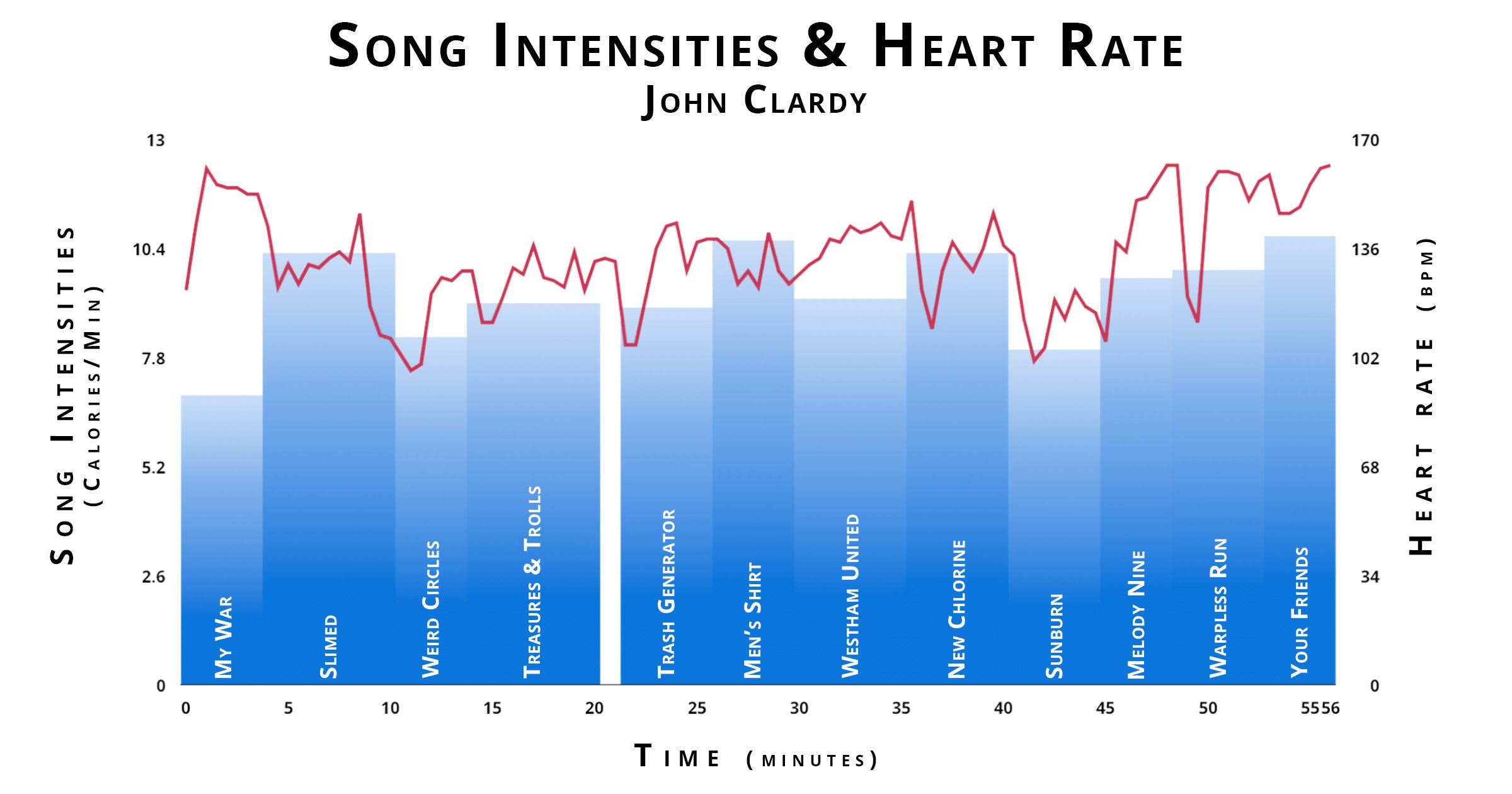
In terms of his rate of Calories burned per minute, John was in the middle to lower end of my data pool, but his body mass is also one of the lowest in the participant pool, and people with lower body mass burn fewer Calories overall for the same activity intensity and duration than people with higher body mass5.
When I accounted for body mass and looked at his rate of Calories burned per kilogram of body mass per minute, John had one of the highest energy expenditures in the study so far! This could be related to many factors, such as playing characteristics (e.g., movement efficiency), musical genre, fitness level, ambient temperature, etc.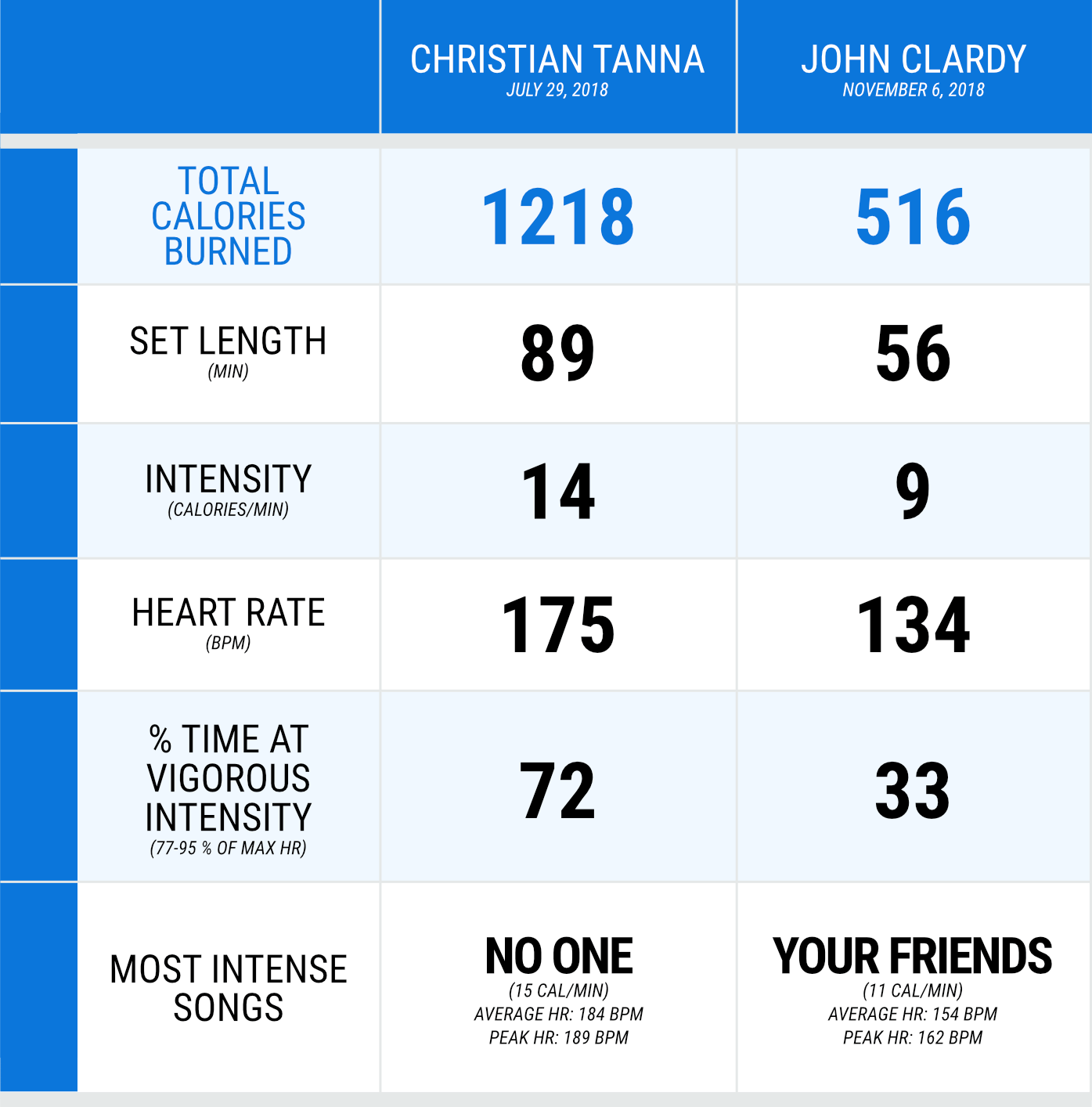
Over the first year of this study, I collected data on 14 professional drummers during live performances. Thirteen participants yielded useable energy expenditure data, and six yielded useable heart rate data. The average rate of energy expenditure across these 13 participants was 10.2 Calories/minute. The average heart rate (6 participants) was 150 BPM, and the average peak heart rate was 179 BPM. On average, these participants spent 62% of their performance time working at a moderate-to-vigorous4 intensity.
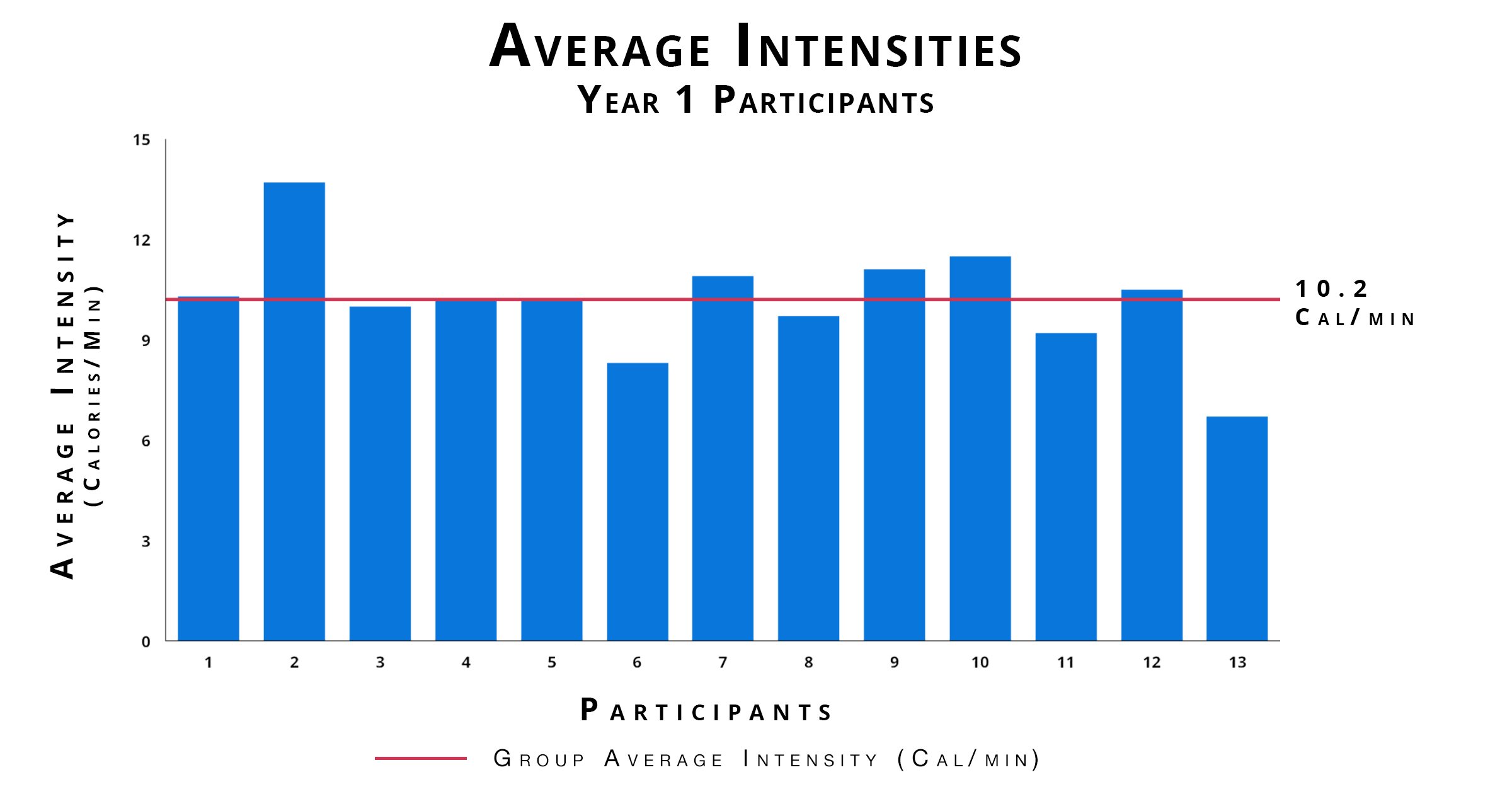
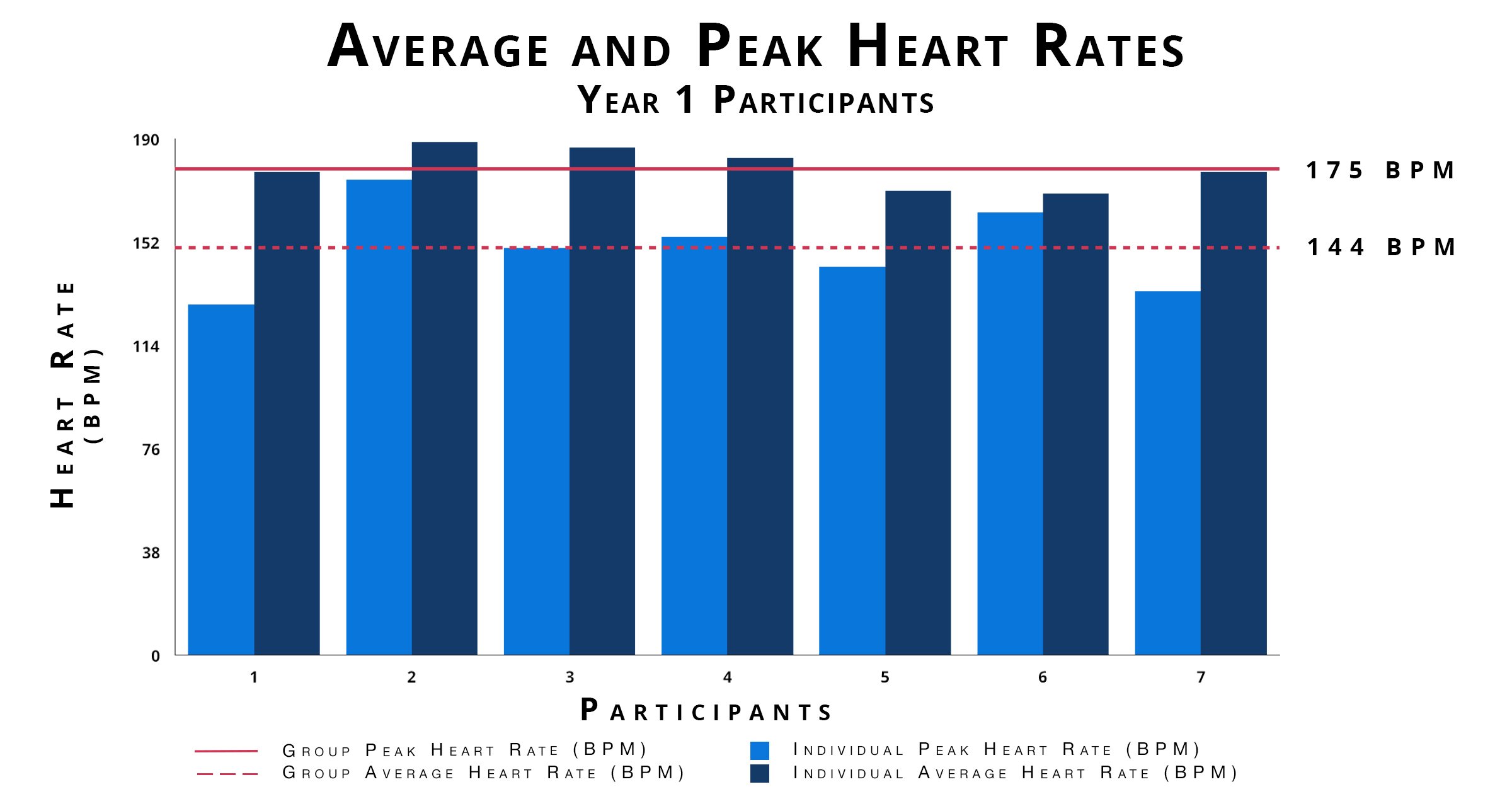
The results from the first year of this study compare favorably to the findings from previous research on energy expenditure in rock/pop drumming6,7. In terms of energy expenditure, Romero et al.6 (5 drummers) and De La Rue et al.6 (14 drummers) reported average rates of energy expenditure of about 9 Cal/min and 10 Cal/min, respectively. Romero et al.6 reported an average HR of 145 BPM, and De La Rue et al.7 reported an average HR of 166 BPM. Although there were methodological differences between my study and theirs, it was still exciting to see that I was getting similar results to previous work.
Overall, we’re building a body of evidence that converges on the same point: playing the drums can be a vigorous physical activity, and professional drummers can reach intensity levels during live performances that are comparable to those seen in other professional athletes8. Nevertheless, I wanted to continue to collect data, especially on drummers from many different musical genres. Interest from drummers who wanted to participate in the study was still high, and Year 2 of the study promised to be a very exciting and interesting one. Stay tuned!
Photos by Joe Orlando & Dory Azar
Nadia Azar Ph.D. is an Associate Professor of Kinesiology at the University of Windsor, where she runs the Drummer Mechanics and Ergonomics Research Laboratory (DRUMMER Lab). Follow Nadia at @DrNadiaAzar or learn more here.


By signing up you’ll also receive our ongoing free lessons and special offers. Don’t worry, we value your privacy and you can unsubscribe at any time.
We use cookies for traffic data and advertising. Cookie Policy »